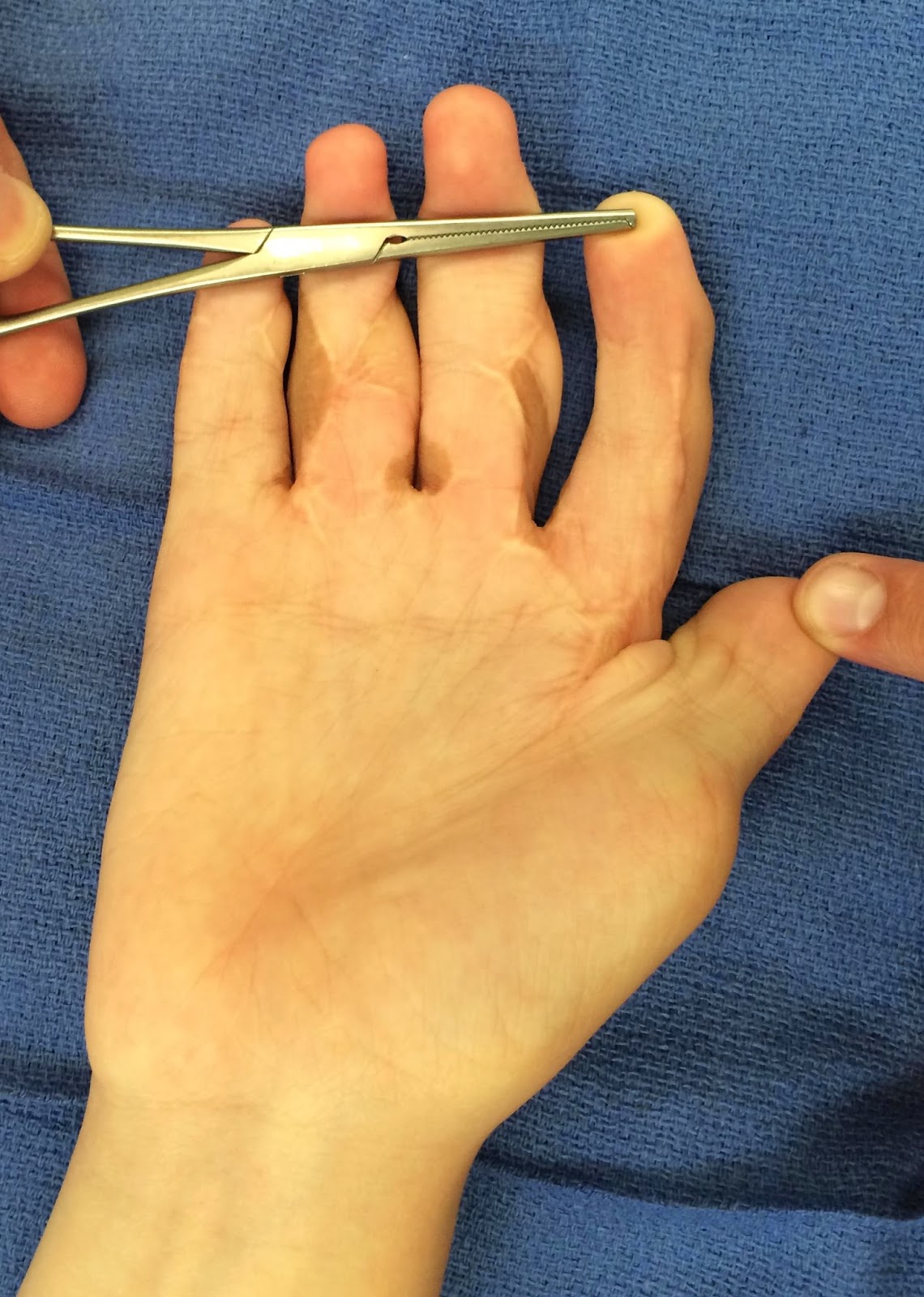Most children treated for syndactyly have an excellent outcome with normal finger motion and good maintenance of the reconstructed web space. However, there are times with the ideal outcome does not happen. A less than perfect outcome includes challenges like:
- prominent scarring,
- an inability to spread the fingers as widely as we would like,
- an inability to straighten the fingers fully,
- creeping of the web space (i.e., when the skin inches out towards the fingertips)
- rotation of the fingers
- deviation of the fingers
- nail irregularity
- discoloration of skin grafts (typically seen with groin skin grafts)
Here are some pictures of some of these challenges in syndactyly.
 |
| Syndactyly web creep between thumb and index finger. |
 |
| Syndactyly web creep between index and long fingers. |
 |
| Scarring after syndactyly reconstruction limiting finger extension. Also not skin graft discoloration. |
 |
| Rotation and deviation after complex syndactyly reconstruction. Most notable in ring finger. |
Here are some thoughts on risk factors and thoughts on these uncommon situations.
1. The biggest risk factor is complex syndactyly– that is when the bones are joined together at the fingertip. We know that these children often have rotation and deviation of the fingers as well as nail irregularity. This was demonstrated in an article in the Journal of Hand Surgery in 2012.
2. Anytime there are more than two fingers involved, the risks increase.
3. If the syndactyly is associated with a syndrome, the risks increase.
4. There are technical risk factors for creeping of the skin or prominent scarring. This means that the surgeon has some degree of control over these risks and an experienced surgeon can minimize these outcomes. But, it is important to note that the surgeon can do everything “right” and sometimes a less than perfect outcome happens and additional surgery may be considered.
5. We also believe that therapy after syndactylyreconstruction can be helpful to minimize problems with scarring.
6. Finally, the nature of the syndactyly itself affects these outcomes. Meaning some children and some types of syndactyly (they are not all the same, some are tighter, sometimes the skin is more pliable, etc.) increase risks.
The bottom line is that every child with syndactyly reconstruction will not have a perfect outcome and some will require a second operation. We follow patients for at least several years after surgery and then intermittently until growth is done. We know that scarred skin does not stretch as well as normal skin and the growing hand can experience problems with syndactyly scars.